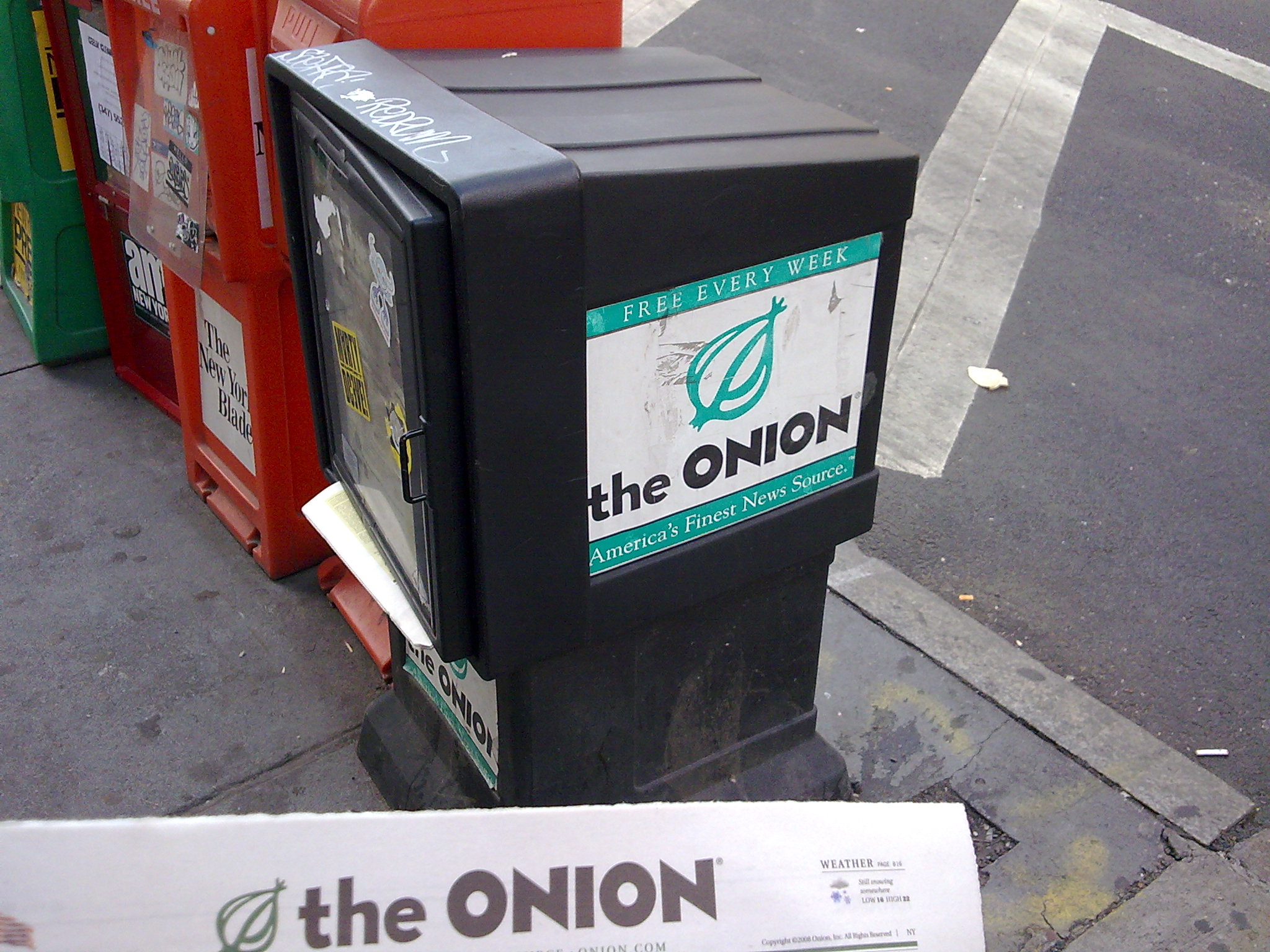On Monday, August 29, 1988, the first issue of a new alternative weekly newspaper hit the streets of Madison, Wisconsin. Madison was already home to half a dozen weekly papers at the time, in addition to two dailies and two student papers, but this one was going to be a bit different.
Rather than report the news, the founders decided it would just be easier to make it up. That paper, The Onion, would go on to become one of the most incisive and influential voices in the history of American satire.
Christine Wenc, one of the original staff members of The Onion and the author of the forthcoming Funny Because It’s True: How the Onion Created Modern American News Satire (Running Press, March 18, 2025), believes the paper’s Midwest origins were essential to its identity. “You can’t do satire unless you have an outsider perspective,” Wenc explained. And the Gen X students and dropouts that made up The Onion’s original staff felt very far outside of the media world, as exemplified by an early story: “‘Midwest’ Discovered Between East, West Coasts.”

Writing for The Onion required a collective, egoless approach, something that came naturally to its largely small-town Midwestern writers. “One of the reasons it has lasted as long as it has is because it’s not about individual superstars, or strong individual writing voices. It’s about the neutral, so-called objective, AP style.”
For newspapers, this rigid style “allows the facts of the news to become the most important thing,” Wenc explained. “With The Onion, the jokes become the most important thing.”
Part of Wenc’s motivation to write her book was to set the record straight (an ironic thing to try to do for a satirical newspaper). Many of the key players did not seek recognition, and so their contributions are not well known. She tells their stories through dozens of interviews along with personal recollections, tracing the rise of The Onion from slacker idea, to internet pioneer, to cultural phenomenon.
Like the organizations it satirizes, The Onion has had to adapt to survive in an everchanging media landscape. A move to New York was followed a decade later by a move back to the Midwest. Pivots to a digital format, to video production, and even to an inhouse advertising agency, as well as a series of corporate acquisitions have kept the organization afloat.
In spring 2024, The Onion was acquired by new owners, Global Tetrahedron, who promised to restore its creative independence. A few months later, the print edition of The Onion returned after more than a decade’s absence. And in November of 2024, The Onion successfully bid to purchase InfoWars, the conspiracy theory and fake news website created by Alex Jones (at time of writing that purchase is being contested by Jones).
What’s next for The Onion? It’s absurd to imagine we can see the future any more than the last 36 years could have been predicted by some kids in Wisconsin sitting around an apartment making up headlines.
